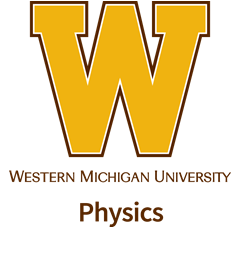Speaker
Dr
Arnaud Colaitis
(LLNL / CELIA)
Description
It has been known for practically two decades that facilities like OMEGA should be well adapted to study the stellar plasma physics. Experiments on various laser facilities (LULI2000, OMEGA, ORION) and on pulsed-power devices (Z pinches at the Sandia laboratory and Imperial College) have put in evidence the astrophysical problems to solve, the challenges ahead and the different techniques to be developed to produce reliable benchmarks [1,2]. A novel technique for opacity measurements in solar conditions is investigated. It is developed in the context of iron opacity measurements near solar interior temperatures and densities, a problem that has recently highlighted discrepancies between theory and observations [3]. This new scheme takes advantage of the stability of thermodynamic parameters induced by Double Ablation Front structures [4], obtained by the interaction of an intense laser pulse with a medium-Z target.
We propose an experimental design based on the current laser and diagnostics capabilities of the OMEGA laser system in Rochester. Extensive simulations suggest the capability to bring an iron sample to an electronic temperature of 170 eV and electron density of 1.5e23 /cm3 during more than 500 ps. The scheme is specially designed to minimize the longitudinal and lateral density and temperature gradients in the sample down to 5% of the on-axis values, in a plasma volume of 300 microns in diameter. Maintaining homogeneous plasma parameters during such a long timescale compared to typical hydrodynamic times ensures Local Thermal Equilibrium in the sample, allowing for a reliable spectral opacity measurement. We further assess the robustness of the technique with respect to hydrodynamic perturbations (from laser imprint or target surface roughness) and to hot electrons (from the non-linear laser-plasma interaction).
This experimental platform was first checked on OMEGA during a shot-day on October 2016. The target was designed with tracer layers of selenium and aluminum to infer the thermodynamic parameters of the target near the sample of interest. While spectral features of the selenium tracer were identified in the experiment, an unexpectedly large quantity of high-energy X-rays produced by the backlighter source produced significant noise in the spectrometer and prevented any opacity measurements. We present results from a follow-up experiment on OMEGA conducted in July 2017.
[1] M. Asplund et al., The Annual Review of Astronomy and Astrophysics 47, 481 (2009)
[2] S. Turck-Chièze et al., High Energy Density Physics, 5, 132 (2009); S. Turck-Chièze & S. Couvidat, Report on Progress in Physics, 74, 086901 (2011); S. Turck-Chièze et al., The Astrophysical Journal 823, 78 (2016)
[3] J.E. Bailey et al., Nature 517, 56 (2015)
[4] V. Drean et al., Physics of Plasmas, 17, 122701 (2010)
*This work was performed thanks to the ANR OPACITY (France) and partly under the auspices of the U.S. Department of Energy by LLNL under Contract DE-AC52-07NA27344.
Release Number: LLNL-ABS-731428
Author
Dr
Arnaud Colaitis
(LLNL / CELIA)
Co-authors
Dr
Christophe Blancard
(CEA/DAM/DIR)
Dr
Jean-Eric Ducret
(CELIA)
Dr
Maëlle Le Penec
(CEA/DAM/DIR)
Dr
Sylvaine Turck-Chièze
(CEA/DRF/IRFU/SAp)

